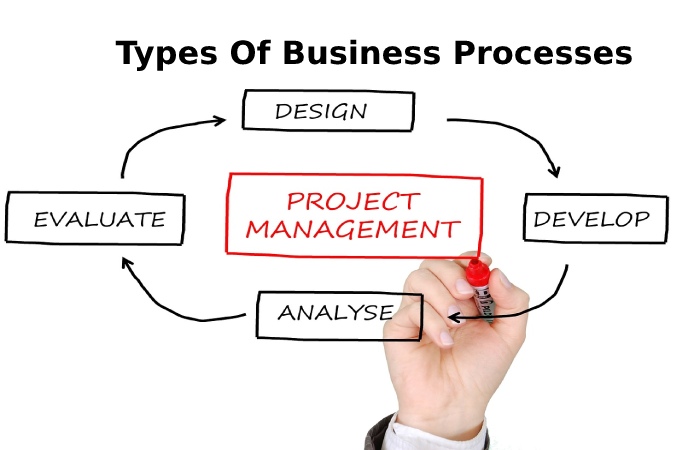Table of Contents
Business Processes
Much has already been written about business process automation in the age of digital transformation. Although each company approaches it differently, several universal factors must be taken into account to implement improvements quickly and, above all, to achieve the intended results and objectives. After all, both automation and digitization of processes make day-to-day business operations more accessible and thus create a competitive advantage.
Choosing the Right Tools to Automate Business Processes
Choosing the right technology is one of the most necessary elements for success in business process automation. Therefore, it is worth considering low code platforms, which are becoming more and more popular. On the one hand, they offer a great set of options and speed in developing fully functional and custom solutions. On the other hand, they do not need us to rely on a team of developers. GDX Group bets on Aura Quantic as a low code iBPMS tool for this project. This tool allows us to focus on the essence of the processes that we are automating, with a simple, repeatable design for every business application we develop.
In addition to Aura Quantic, implementing a solution such as Invoice OCR can significantly enhance your business process automation. Invoice OCR, or Optical Character Recognition, is a technology that enables the extraction of data from scanned invoices, converting it into an editable and searchable format. This not only speeds up the process of invoice processing but also minimizes human error.
It has a unified interface, which is a great time saver for the implementation team. Thus, you can use previously applied elements in other configurations without worrying about which colours and icons to use in each project. Additionally, a visually consistent system is more accessible for users to operate, regardless of their technological proficiency.
Features
This solution can help with changes in the business environment that require application access to be modified, workflow instances to be update or substitutions for employee absences. In turn, there are other functionalities with a direct and practical impact on the automation of business processes and their maintenance and post-implementation development. These include:
- easy scalability and integration with other systems
- reporting functions
- the choice to add attachments and instructions for users
- reuse of mechanisms
- transfer between different environments (DevTestProd)
- automatic documentation
- audibility
- change of records
A Complete Perspective on Business Processes
A business process remains more than a set of instructions on performing certain activities within a company. Instead, it is an operational manifestation of organizational politics. Simply knowing this definition is enough to conclude that when developing plans for business process automation, the first task should be to define and thoroughly understand the processes we want to improve. Whether we need to automate a large area of our business activity or just a single workflow, it is true. Therefore, we should look at processes from a comprehensive and holistic perspective from the beginning.
Types of Business Processes

Thus, The Business Processes of a Company Can be Divided Into Two Groups:
core processes: which are vital in running the business
supporting processes: the interruption of which would hamper the functioning of the organization but would not stop it
Core processes generally include all those related to the external component of running a business, including areas such as customer relations. Support processes refer to the back-office systems that support the company and its employees, such as absence management, business travel, or new employee onboarding. Sometimes the support processes of one organization turn out to be critical in another. It depends on the particularities of each business. For example, office processes usually relegated to supporting other companies gain central status for a company whose core business is processing customer letters within a defined period.
The Implementation Method Adapt to Each Project
Once we decide which business process to improve. We need to consider what part of the business activity it is involved in, how many departments contribute to its execution. And what results in we expect from its automation. Accurate and comprehensive answers to these questions will determine the optimal methodology for building software and continuing implementation work.
CASCADING
The classic waterfall approach will work fine for missions where we know exactly what we need and plan to achieve it. In the analysis stage, we write the list of requirements for the project, establish a time frame, and choose which of the company’s existing procedures we want to see modelled in the system. We then go through the traditional stages of the waterfall model. Which does not allow work to begin on the next step unless the previous phase has been completed. The waterfall approach is generally applied to a company’s finance and quality processes, such as invoices, orders, investment applications, budgets or ISO procedures.
AGILE
For its part, the agile methodology will fit nicely in projects with critical characteristics that are likely to change for implementation. Combine with the Pareto principle. According to which 80% of the results can be achieve with 20% of the work, the agile approach introduces an entirely new paradigm for delivering IT solutions. We are no longer developing a distant final version of the system, but version 1.0 starts with all the basic functionalities, which means it remains ready to use. A good example here would remain a project management application. The only things we want to launch it in a production environment are:
- project list
- employees working on a given project
- tasks we intend to assign to people
In later versions, additional elements and more advanced functionalities can be add, such as:
- reporting time
- expense verification
- the financial perspectives of the project
Proof-of-Concept
In the Fourth Industrial Revolution era, it was customary for marketing departments to develop lists of ideas on improving their business and making it stand out from the competition. Of course, not everyone will deserve a complete implementation in a production environment. Still, before deciding to implement new technology, it’s a good idea to test it first in a controlled environment. It is the utility of the Proof-of-Concept approach, based on Rapid Prototyping and Failure-as-a-Service (FaaS) methodologies. The works like a kind of test run where, with just a sketch of an idea for a commercial app, we design an initial version and proceed to test it right away.
It allows us to check quickly and cheaply if the area we want to improve needs it and if the staff in a specific department is ready for the changes and willing to use the new tool. Thus, if the tests reveal that the new technology is not helpful or has no practical application. We tin always postpone its development or even abandon it completely. Without feeling that we have lost a significant amount of time or money (Fast Fail).
Describe the Complexity of the Business Presentation Being Deployed
When deciding to automate and digitize business processes. It is also worth considering the complexity of the applications we ultimately intend to build. It’s easy to come to the intuitive conclusion that the more complicate a business process is, the more advanced the application is use to improve it. However, we should not regard it as a foregone conclusion. Sometimes, a simple application in one company (such as to request management) can be very complex.
An easy-to-implement and straightforward business process (i.e. a process consisting of two or three steps and multiple fields on a form) that companies often use as a starting point for digitization include things like:
- monitor working time
- file contracts
- determine equipment needs
- helpdesk management
- car rental for business trips
Quick success, low risk, development potential. And a low barrier to entry for end-users are positive signs for those taking their first steps on the path to digital transformation. In all these cases, using a high-quality, low-code business process automation platform, such as Aura Quantic, helps make a flexible and innovative ecosystem of standardized business applications tailored and adjusted to meet the needs of a specific organization.

